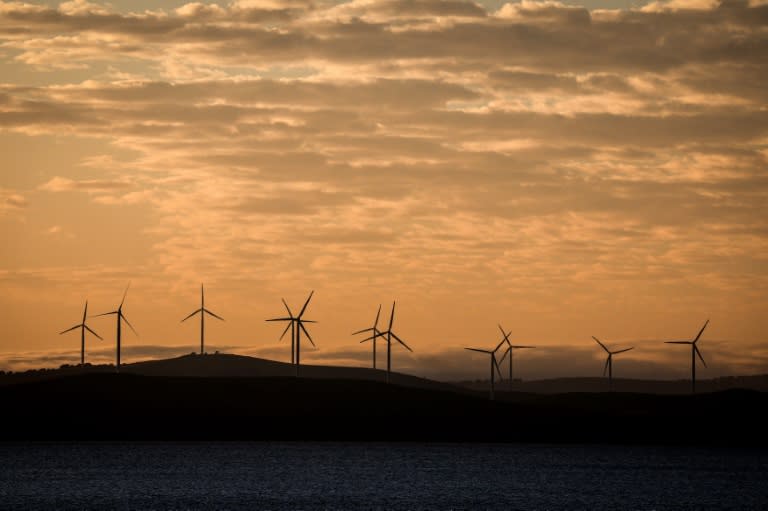Coal generates less than 50% of Australian electricity for first time

Coal generated less than 50 percent of Australia's electricity in the last week of August, dropping to a record low as renewable production surged, data showed Wednesday.
According to market monitor Open-NEM, coal generated 49.1 percent of the country's electricity, while renewables accounted for 48.7 percent as storms boosted wind production.
Coal still accounts for a third of global electricity generation, according to the International Energy Agency (IEA), and demand for the climate-warming fossil fuel reached a record high in 2022.
But for the world to reach net zero by 2050, all coal generation without abatement measures must end by 2040, the IEA says.
Australia remains one of the world's leading exporters of coal and gas and has relied heavily on fossil fuels to keep the lights on.
But climate finance expert Tim Buckley said August's record figures were caused by wild weather and a warm start to the spring, which had reduced demand on the grid by up to 20 percent.
Winds exceeding 150 kilometres (93.2 miles) per hour in the southeast of the country had also almost doubled the usual wind generation.
"It's a historically low coal share for Australia in the national energy market, but it's also a sign of where we are going," Buckley told AFP.
"It will only be a few years from now that coal is contributing virtually nothing," he added.
As recently as 2000, more than 80 percent of electricity in Australia was generated from coal, but the figure has mostly been declining since then.
- Renewables investment -
With most of Australia's 16 coal-fired power stations to close in the coming years, government and industry are racing to invest in the renewable energy sector.
Canberra unveiled on Wednesday six battery projects to be built across South Australia and Victoria that will provide 1,000 megawatts of storage by 2027.
And last month it approved plans for a massive solar and battery farm capable of supplying domestic needs and exporting power to Singapore.
Energy Minister Chris Bowen said the energy transition was going to happen because "the climate demands it, and economic reality demands it".
"We must be implementing sensible solutions now, not in a decade, or two decades, to be certain that Australia's energy needs will be met."
Buckley said that while Australia's investment in the sector was growing, it lagged behind other countries.
"China has overtaken Australia in renewables. It is investing nearly a trillion Australian dollars ($671 billion) a year in clean tech and when it comes to renewables," he said.
"China is installing as much new renewable capacity in a week as Australia installs in a year."
Last week, Australia's energy regulator warned ongoing investment in the renewable energy market was needed to avoid blackouts in the coming decades as demand is projected to soar.
lec-sah/dan
